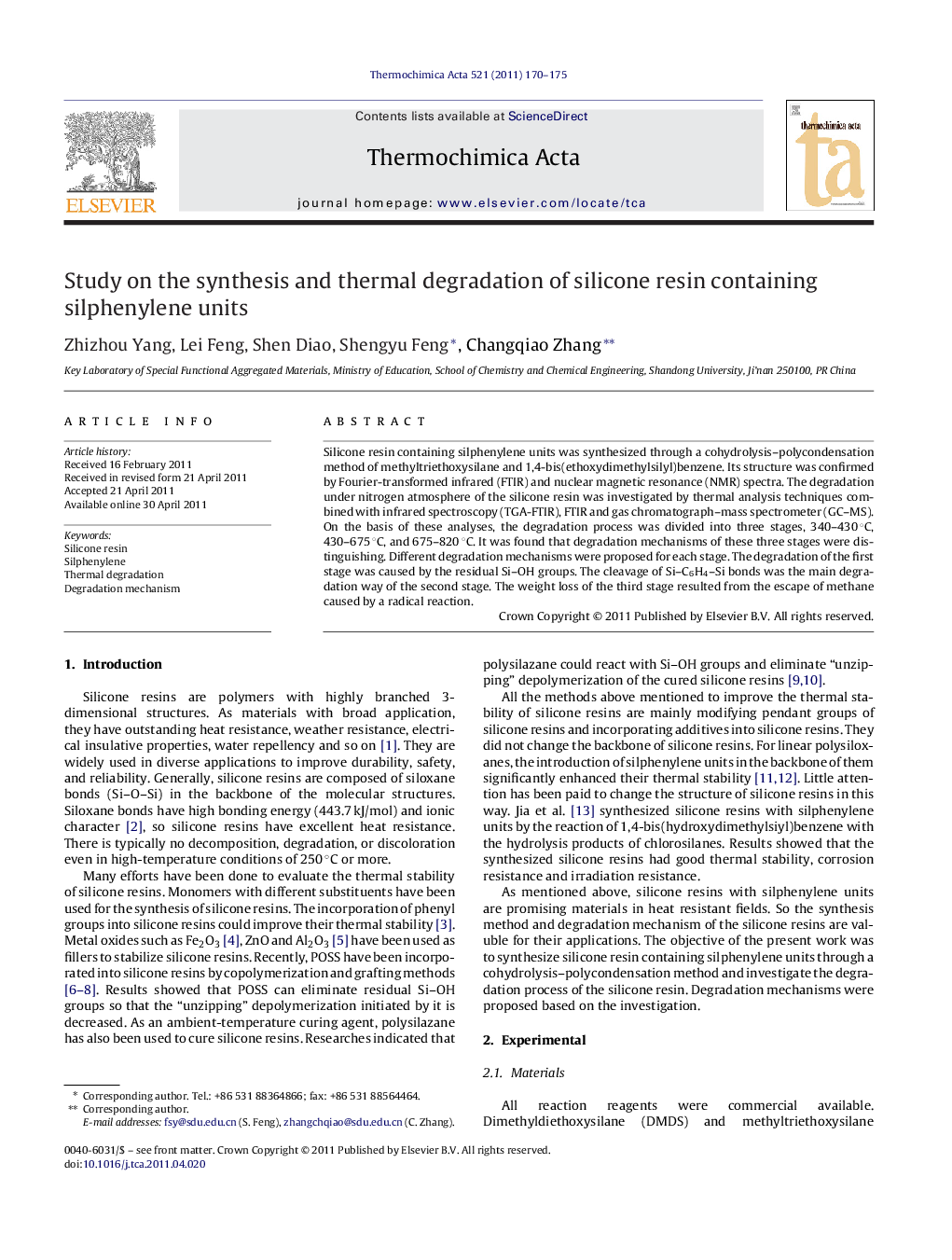| کد مقاله | کد نشریه | سال انتشار | مقاله انگلیسی | نسخه تمام متن |
|---|---|---|---|---|
| 674507 | 1459563 | 2011 | 6 صفحه PDF | دانلود رایگان |

Silicone resin containing silphenylene units was synthesized through a cohydrolysis–polycondensation method of methyltriethoxysilane and 1,4-bis(ethoxydimethylsilyl)benzene. Its structure was confirmed by Fourier-transformed infrared (FTIR) and nuclear magnetic resonance (NMR) spectra. The degradation under nitrogen atmosphere of the silicone resin was investigated by thermal analysis techniques combined with infrared spectroscopy (TGA-FTIR), FTIR and gas chromatograph–mass spectrometer (GC–MS). On the basis of these analyses, the degradation process was divided into three stages, 340–430 °C, 430–675 °C, and 675–820 °C. It was found that degradation mechanisms of these three stages were distinguishing. Different degradation mechanisms were proposed for each stage. The degradation of the first stage was caused by the residual Si–OH groups. The cleavage of Si–C6H4–Si bonds was the main degradation way of the second stage. The weight loss of the third stage resulted from the escape of methane caused by a radical reaction.
► Silicone resin containing silphenylene units was synthesized through a hydrolysis–polycondensation method.
► The thermal degradation under nitrogen atmosphere of the silicone resin was investigated by TG-FTIR, FTIR and GC–MS.
► The degradation process of the silicone resin was divided into three stages and different degradation mechanisms were proposed for each stage.
Journal: Thermochimica Acta - Volume 521, Issues 1–2, 10 July 2011, Pages 170–175